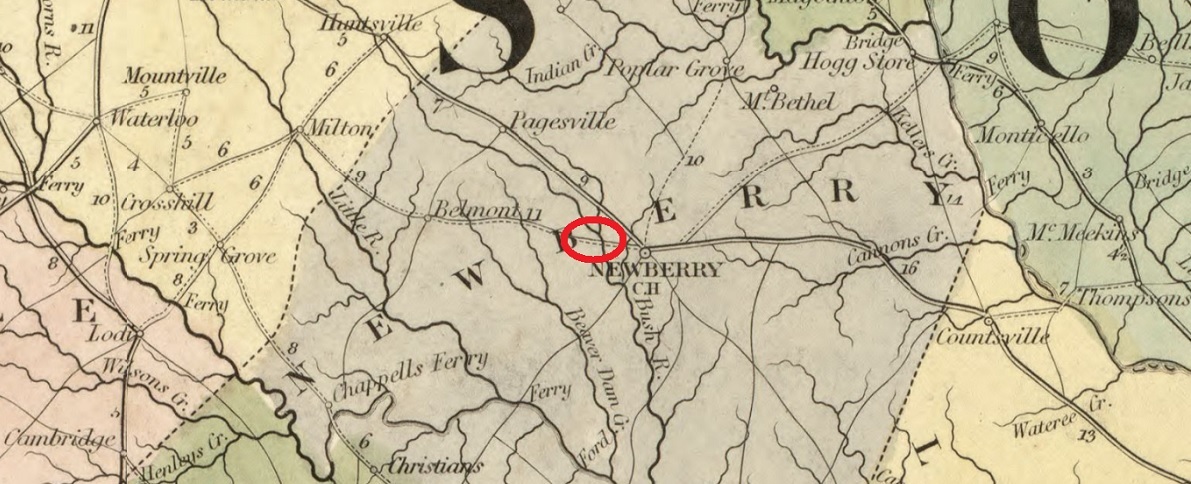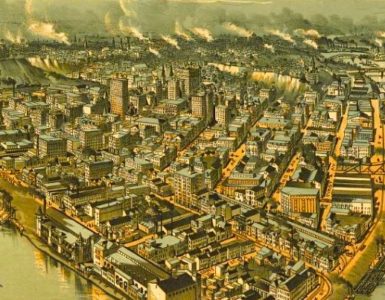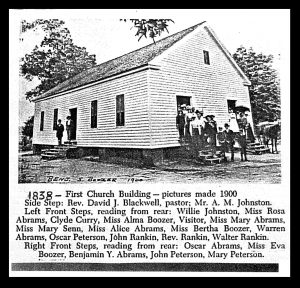 The church at Smyrna addressed by Jesus in Revelation 2 was located on a scenic bay at the base of Mt. Pagos in the southwest portion of what is currently Turkey. Smyrna was considered the loveliest city in the most beautiful setting of the seven addressed by Jesus and its church was the only one that was neither rebuked nor warned by him about sin within. Instead, the Smyrna Christians were encouraged by Jesus as they faced severe persecution. If a church is selecting a name from the seven churches of Revelation, Smyrna is a good choice given its faithfulness to the Lord. Even though Smyrna Presbyterian Church is not at the base of a mountain, nor on a bay, its location about five miles west of Newberry, South Carolina, is in scenic farmland which has a beauty of its own.
The church at Smyrna addressed by Jesus in Revelation 2 was located on a scenic bay at the base of Mt. Pagos in the southwest portion of what is currently Turkey. Smyrna was considered the loveliest city in the most beautiful setting of the seven addressed by Jesus and its church was the only one that was neither rebuked nor warned by him about sin within. Instead, the Smyrna Christians were encouraged by Jesus as they faced severe persecution. If a church is selecting a name from the seven churches of Revelation, Smyrna is a good choice given its faithfulness to the Lord. Even though Smyrna Presbyterian Church is not at the base of a mountain, nor on a bay, its location about five miles west of Newberry, South Carolina, is in scenic farmland which has a beauty of its own.
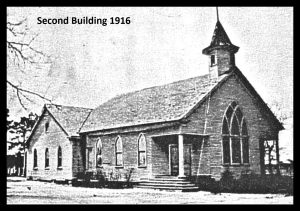 One aspect of this article that is unusual is having pictures of each of the three buildings used by the congregation over the years. Very often old churches do not have pictures of their oldest buildings. The first building for Smyrna was made with simple frame construction and completed in 1838. The second church had more elegant windows, corner entrance doors, a bell tower, and decorative millwork. The date on the picture is 1916, but the style appears older. According to the corner stone of the current church it was built in 1935 to replace its predecessor which had been destroyed by fire. There is a cemetery located behind the church with graves predating construction of the original building.
One aspect of this article that is unusual is having pictures of each of the three buildings used by the congregation over the years. Very often old churches do not have pictures of their oldest buildings. The first building for Smyrna was made with simple frame construction and completed in 1838. The second church had more elegant windows, corner entrance doors, a bell tower, and decorative millwork. The date on the picture is 1916, but the style appears older. According to the corner stone of the current church it was built in 1935 to replace its predecessor which had been destroyed by fire. There is a cemetery located behind the church with graves predating construction of the original building.
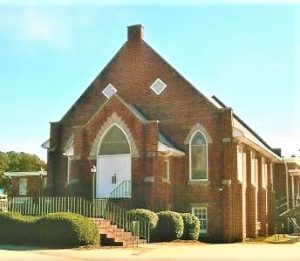 Smyrna Presbyterian Church was organized with seventeen members by South Carolina Presbytery of the Presbyterian Church in the United States of America, Old School, on September 25, 1838. R.C. Ketchum and M.D. Fraser presided over the service that organized as a particular church nine individuals surnamed Boozer, three Senns, two Clarys, one Cappock, one Benton, and one Hendrix. George Boozer, Esq., and David Clary were elected, ordained, and installed elders. There is no mention in the sources of the election of any deacons. The identifications of individuals in the photograph of the first church building show that descendants of the first congregation were members when the image was taken in 1900.
Smyrna Presbyterian Church was organized with seventeen members by South Carolina Presbytery of the Presbyterian Church in the United States of America, Old School, on September 25, 1838. R.C. Ketchum and M.D. Fraser presided over the service that organized as a particular church nine individuals surnamed Boozer, three Senns, two Clarys, one Cappock, one Benton, and one Hendrix. George Boozer, Esq., and David Clary were elected, ordained, and installed elders. There is no mention in the sources of the election of any deacons. The identifications of individuals in the photograph of the first church building show that descendants of the first congregation were members when the image was taken in 1900.
As the small congregation gathered for worship it was supplied intermittently by R.C. Ketchum, George Boggs, P.H. Folker as well as others until 1840 when native South Carolinian John McKittrick accepted a dual call to the Smyrna and Aveleigh churches. George Howe notes (2:720) that McKittrick was ordained and installed in a service during an adjourned meeting of South Carolina Presbytery, November 11, 1840. The moderator, Rev. Edwin Cater, pastor of the Rocky Creek Church, delivered his sermon from Isaiah 52:7.
How beautiful upon the mountains are the feet of him that bringeth good tidings, that publisheth peace; that bringeth good tidings of good, that publisheth salvation; that sayeth unto Zion, Thy God reigneth! (King James Version)
Charges to both the pastor and congregation were presented by Rev. Hugh Dickson who had helped McKittrick as he worked his way through studies for the ministry. McKittrick served Smyrna until he moved to Fountain Inn in 1844 to become organizing pastor of New Harmony Presbyterian Church. Other ministers pastoring the Smyrna flock included E. F. Hyde (1845-1849), W. B. Telford (1850-1853), and Rev. Holmes (1853-1855, most likely Zelotes L. Holmes).
Robert McLees was installed the minister in 1856. He was born on a farm in Anderson County, April 30, 1820. His family were members of Roberts Presbyterian Church where during the ministry of Pastor David Humphries, McLees professed faith in Christ and became a communing member in April 1850. He studied in a local academy in preparation for ministerial studies. The Presbytery of South Carolina took him under care as a candidate before he entered Columbia Theological Seminary for the fall session in 1852. He was licensed by his presbytery, graduated Columbia with thirteen classmates in 1855, and was then ordained and installed August 24th, 1856 in Smyrna with a yoked call including two other churches. At the same presbytery meeting that accepted the report of his ordination and installation service, he was appointed chairman of the committee that coordinated supply ministers for vacant pulpits. The supply committee was busy given the abundant need for worship leaders for scattered congregations in South Carolina. His new residence provided acquaintance with Sue Elizabeth Wertz of Newberry, and they were married July 5, 1858. Unfortunately, his call to Smyrna was brief because he resigned in 1861 due to health problems. He moved to Anderson and filled vacant pulpits as he could until he died of the red death, tuberculosis, April 4, 1866. He is buried in the Roberts Cemetery in Anderson, South Carolina.
After the call of McLees and up to the turn of the century there were numerous ministers or supplies that served Smyrna Church for tenures of just a few months to about five years. It is not always clear in sources for Presbyterian history whether the ministers visiting congregations were there as supplies or as installed pastors, but one exception to the short tenures of preachers is the ten-year ministry of Thomas Cheves Ligon, 1872-1882. Ligon was born in Abbeville, graduated Erskine College, and had just completed preparation for the ministry in Columbia Seminary. His ten years with the church may have been aided by the social-pastoral advantage of being married to Medora E. Boozer who surely had relatives among the Smyrna congregants. On through the remainder of the nineteenth century and into the twentieth, Smyrna Church was a member of the Presbyterian Church in the United States until it united with the Presbyterian Church in America as a member congregation of Calvary Presbytery.
Please visit the Presbyterians of the Past homepage and see the topical selections included in the recently updated “Notes & News” collection. Older entries no longer available on the homepage can be accessed in the “Notes & News Archive.”
Barry Waugh
Notes—The map in the header was snipped from “Map of North and South Carolina exhibiting the post offices post roads, canals, rail roads &c. By David H. Burr,” on the Library of Congress website; the “CH” under “Newberry” on the map is for Court House which signifies the county seat. The photograph of the current Smyrna building was taken by the author in December 2012, and the two black-and-white pictures were provided by Wayne Sparkman of the P.C.A. Historical Center in St. Louis, Missouri. In 1888, the Synod of South Carolina of the P.C.U.S. consisted of five presbyteries: Bethel, Charleston, Enoree, Harmony, and South Carolina and their total communicant membership was 15,085. In 1918, the Synod’s 30,083 members were distributed among eight presbyteries: Bethel, Charleston, Congaree, Enoree, Harmony, Pee Dee, Piedmont, and South Carolina. (Minutes of the Synod of South Carolina). The population of South Carolina grew from 1,151,149 in 1890 to 1,683,724 in 1920, which is an increase of forty six percent while the Presbyterians doubled. See, Walter Edgar, “Population,” in The South Carolina Encyclopedia, 2006. Other sources include Mary Lou Stewart Garrett, History of Fairview Presbyterian Church, of Greenville County, South Carolina, Published by the Church, 1986; George Howe, History of the Presbyterian Church in South Carolina, 2 vols. (Columbia: Duffie & Chapman, 1870; Columbia: W. J. Duffie, 1883); and F. D. Jones and W. H. Mills, History of the Presbyterian Church in South Carolina Since 1850, Columbia: Synod of South Carolina, 1926. McLees information was found in Catalogue of the Officers and Students of the Theological Seminary, at Columbia, March 1857, Columbia: I. C. Morgan, 1857, also for years 1853, 1854; and in Memorial Volume of the Semi-Centennial of the Theological Seminary at Columbia, South Carolina, 1884.


